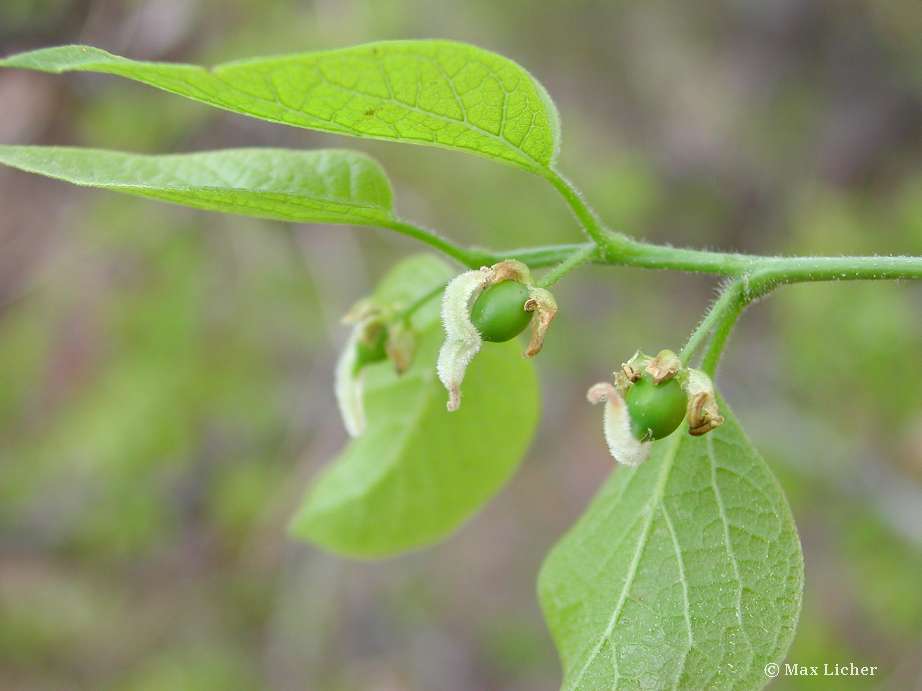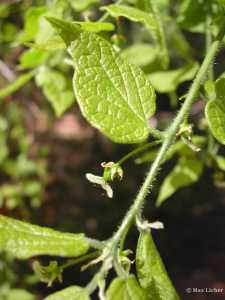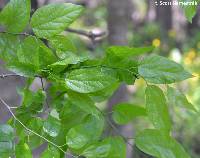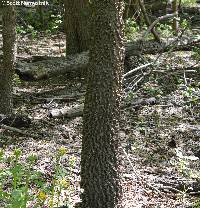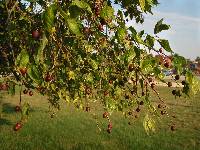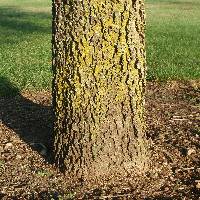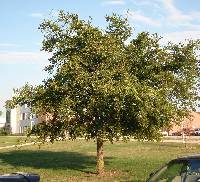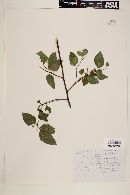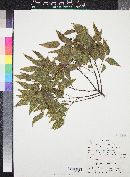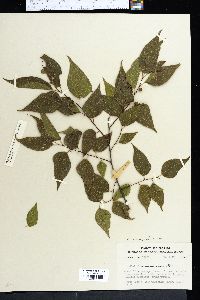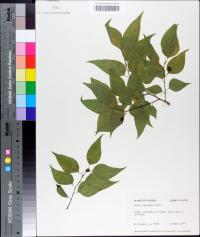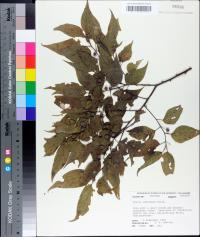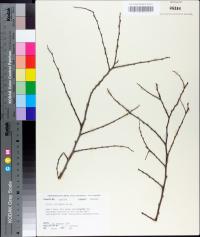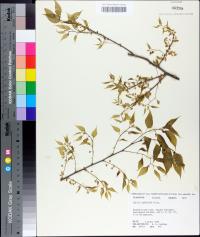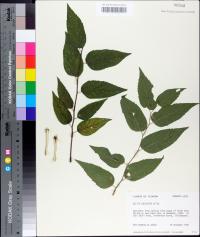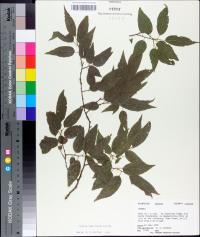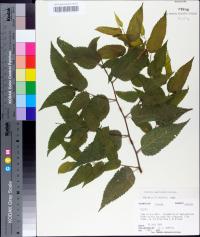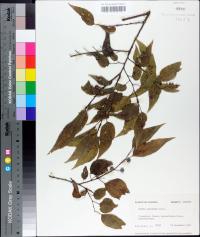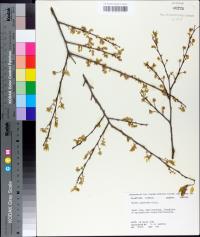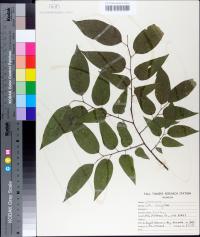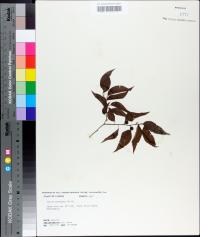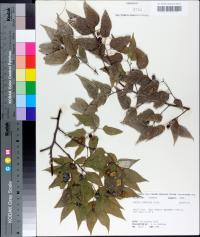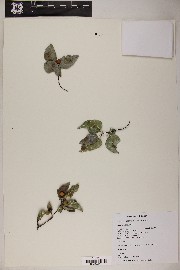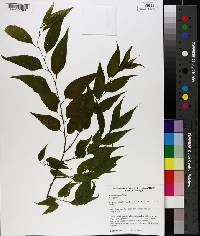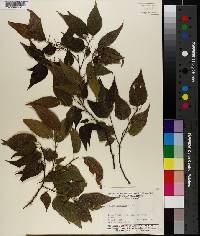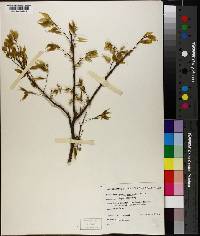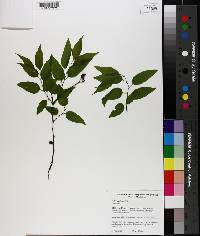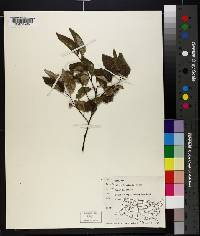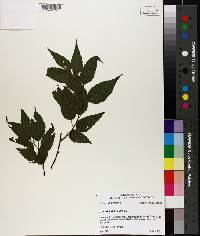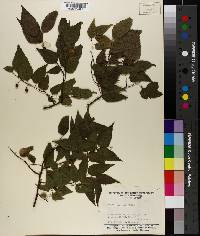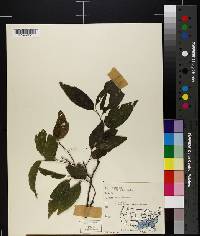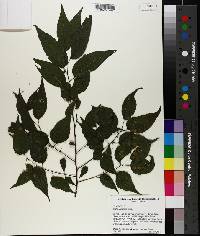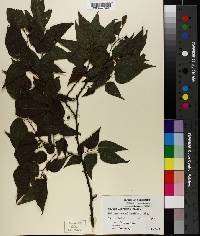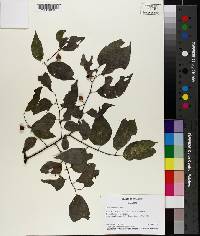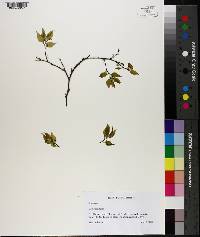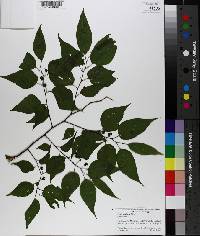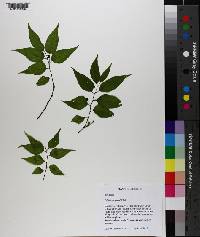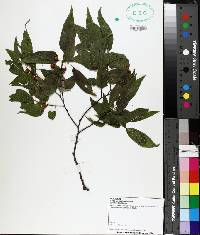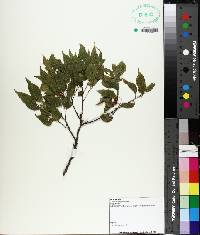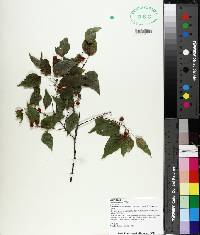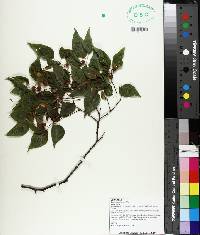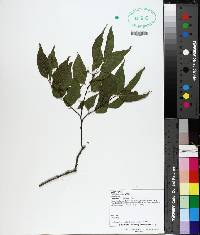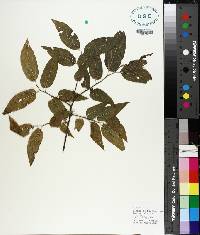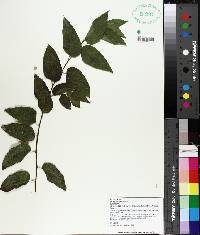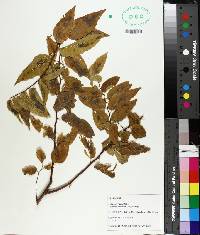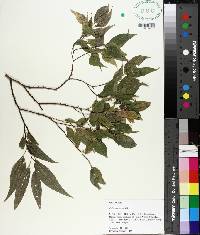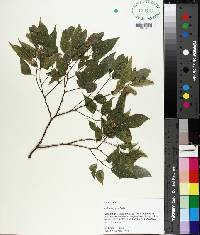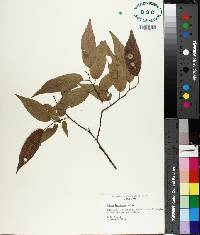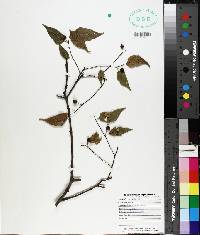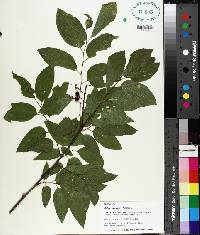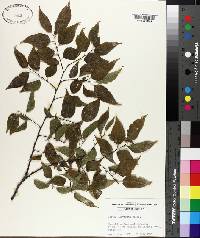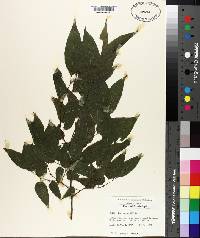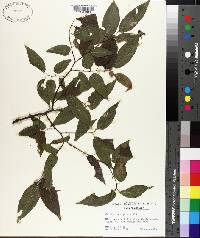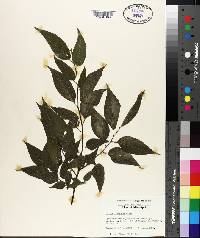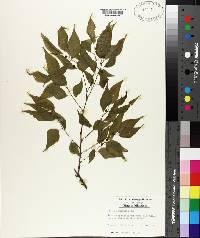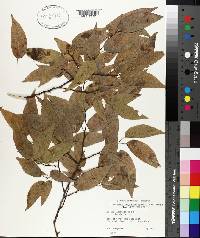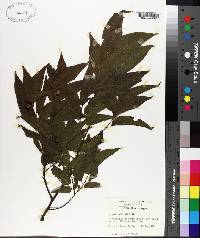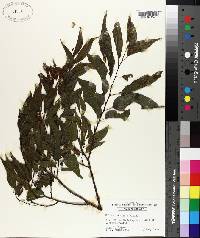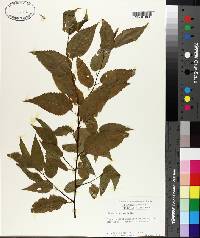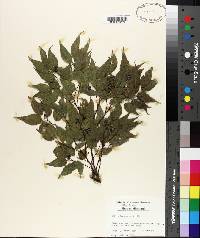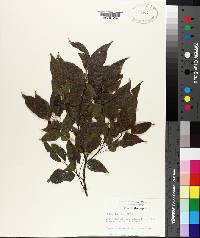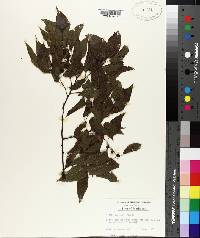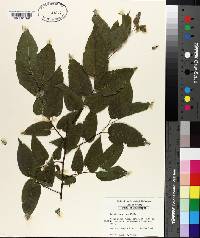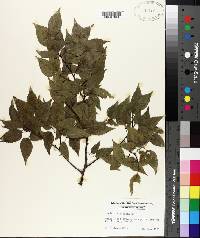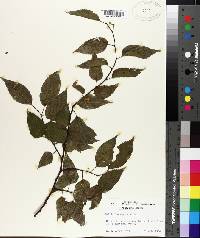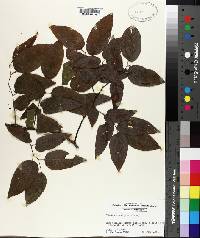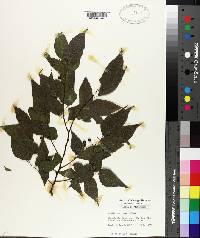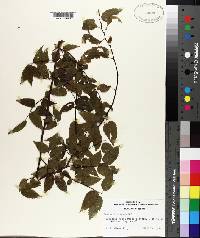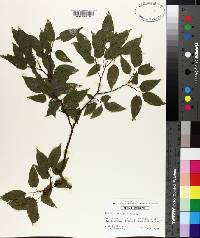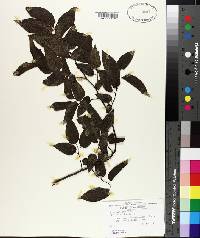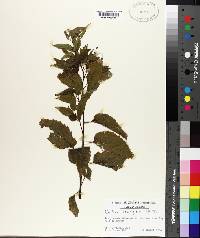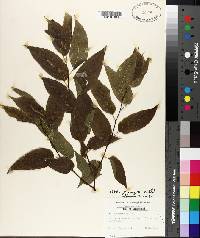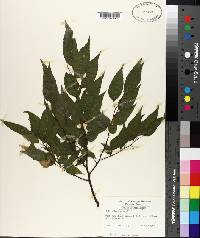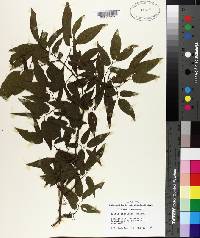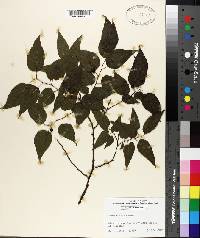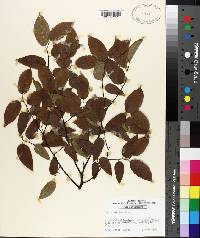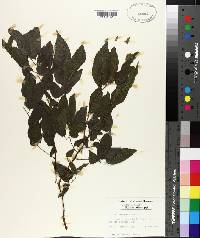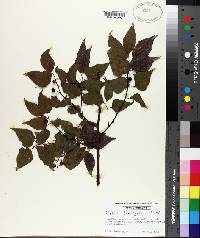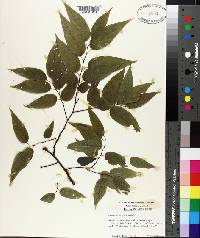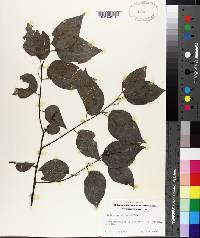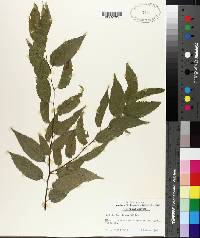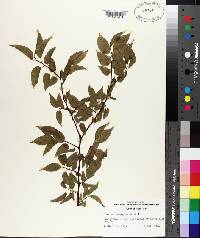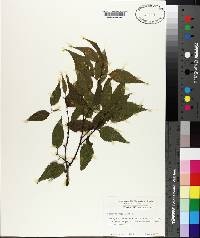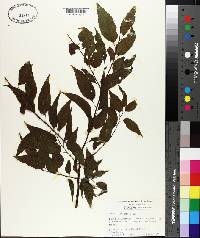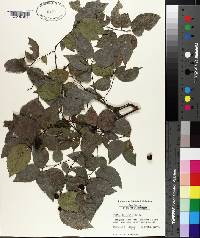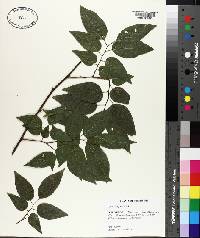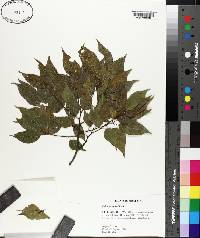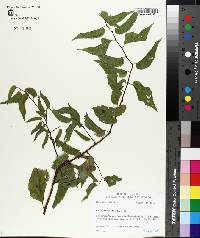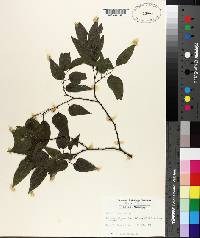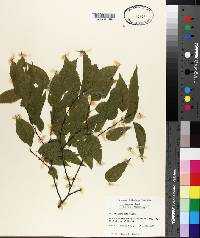
|
|
|
|
Family: Cannabaceae
Sugar-Berry, more...sugarberry, sugar berry, sugar hackberry
|
Trees , to 30 m; trunks to 1 m diam., crowns broad, spreading. Bark light gray, smooth or covered with corky warts. Branches without thorns, often pendulous, young branches pubescent at first, then glabrous. Leaves: petiole 6-10 mm. Leaf blade typically elliptic-lanceolate to ovate-lanceolate, (4-)6-8(-15) × (2-)3-4 cm, thin and membranaceous to leathery, base broadly cuneate to rounded, margins entire or rarely with a few long teeth, apex sharply acute to acuminate; surfaces glabrous or nearly so, margins ciliate. Inflorescences: flowers solitary or few-flowered clusters at base of leaves. Drupes orange to brown or red when ripe, nearly orbicular, 5-8 mm diam., beakless; pedicel 6-15 mm. Stones 4.5-7 × 5-6 mm. 2 n = 20, 30, and 40. Flowering late spring-early fall (May-Oct). In rich bottomlands along streams, in flood plains, and on rocky slopes; 0-300 m; Ala., Ark., Fla., Ga., Ill., Ind., Kans., Ky., La., Md., Miss., Mo., N.C., Okla., S.C., Tenn., Tex., Va., W.Va.; n Mexico. The Houma used preparations from the bark of Celtis laevigata to treat sore throats and venereal disease (D. E. Moerman 1986).
Tree to 30 m; lvs yellowish-green, lanceolate, 4-8 cm, ±long-acuminate, entire or seldom with a few long teeth, broadly cuneate to rounded at base, glabrous or nearly so except for the ciliate margins; style promptly deciduous after flowering; fr dark orange-red, 5-9 mm, the pedicel 3-6 mm, equaling or shorter than the subtending petiole; 2n=20. Wet grounds; Fla. to Tex. and ne. Mex., n. to s. Mo., s. Ind., and s. Va. (C. mississippiensis; C. smallii) Gleason, Henry A. & Cronquist, Arthur J. 1991. Manual of vascular plants of northeastern United States and adjacent Canada. lxxv + 910 pp. ©The New York Botanical Garden. All rights reserved. Used by permission. From Flora of Indiana (1940) by Charles C. Deam Infrequent to rare or locally common in low woods in the southwestern part of the state. It is usually found in low woodlands, especially those that are more or less inundated. It is abundant in the bottoms along the Wabash River and frequent in the bottoms near the mouth of Little Pigeon Creek. It no doubt formerly followed the larger streams farther northward than our map indicates. It prefers a hard soil and is rarely found in a porous, alluvial soil. The leaves of this species are usually almost uniform but variations are found. A mile and a half northwest of Griffin, Posey County, I found a large tree that had small leaves, in size and shape like those of the next species but here and there among the leaves were typical ones. The location of the typical leaves indicated to me that the dwarfing was a matter of nutrition but in this I may be in error. The typical leaves are thin and not at all coriaceous but sometimes the leaves are more or less coriaceous. The thickening of the leaves may be due to location of the tree, because, as I now recall, trees of this sort were found in the open. In fact, most of our specimens are taken from low, round-topped trees of the open because specimens could not easily be obtained from tall, forest-grown trees. The effects of the environment of the trees must therefore have consideration. This species is usually associated with pecan, sweet gum, pumpkin ash, cane, and soft maple. ...... Indiana Coefficient of Conservatism: C = 7 Wetland Indicator Status: FACW Deam (1932): With one exception all the specimens of this species have been found in very low ground. Usually it is associated with such low ground species as pecan, red gum, pumpkin ash, and cane. One very peculiar specimen was found on the crest of a ridge about seven miles north of Salem in Washington County. It was a tree about fifteen feet tall, and had very narrow, entire leaves. |
|
|
|
This project was made possible in part by the Institute of Museum and Library Services [MG-70-19-0057-19].
Powered by Symbiota

